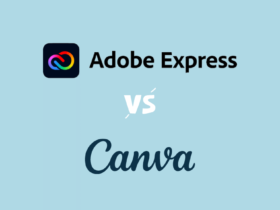Staring at a blank page torments writers facing the pressure of crafting captivating stories from thin air. However, effectively harnessing online digital notepads’ versatile capabilities offers a simple way to nurture creative writing from tiny sparks into fully-fledged tales ready for the big screen or printed page. If you’ve struggled with writer’s block or feel held back from realizing story visions brewing in your imagination, read on to discover how online notepads transform stagnant stalled stories into thrilling finished creations.
Notepad difference for creative writing
Too often the rigid structures imposed by traditional linear word processors constrain narratives rather than liberating them. Online notepads flip the script through:
- Unstructured space – With endless flexibility over note formatting, layout, doodling, visual elements, and other multimedia, notepads provide unbounded creative sandboxes for ideas to play.
- Non-linear storyboarding – Not forcing prose into static sequential document formats allows intuitively arranging, linking, and re-arranging narrative beats using text, sketches, and references until the flow clicks organically.
- Quick capture abilities – Having an always-open online notepad window makes it effortless to quickly save great phrases, scene concepts, and bits of dialogue the moment inspiration strikes before losing steam.
- Frictionless organization – Features like tagging notes, backlinking story elements, pinning key scenes, and nesting ideas under headings enable organizing content and discovering narrative order in flexible free-flowing ways. Click here to access more details – notesonline.com/
notepad.
Core storytelling features in online notepads
When selecting which online notepad suits your creative writing needs, consider these feature areas:
- Non-linear organization – As highlighted above, the capability to freely arrange scenes and stitch narrative elements together, then restructure as ideas evolve is essential.
- Secure sharing controls – For getting feedback from editors, beta readers, or a writer’s group on drafts, being able to tightly control access and commenting abilities is important for maintaining ownership of ideas.
- Portability – The ability to continue writing on smartphones and tablets on-the-go, while still accessing the core story outline and notes hub from any device via the cloud is hugely valuable.
- Distraction-free modes – Immersive full-screen views, dark mode, typewriter scrolling, and similar options help writers hone focus when in a flow state for power writing sessions.
Tips for writers transitioning to online notepads
For writers used to past methods, these tips help ease the transition:
- Set target word counts – Establish minimum viable word counts for different stories or chapters so that visual plotting supports efficiency, rather than risking over-outlining certain pieces at the expense of actual writing.
- Capture great lines immediately – Keep your device handy or the notepad browser tab open to jot exceptional paragraphs, dialogue snippets, and phrases as they come to not lose inspiring shards making finished pieces shine.
- Tag key story aspects – Use tags, text formatting, symbols, and dedicated fields in notes to identify critical components like plot points, settings, character bios, and themes at a glance while outlining stories.
- Plot loose first, tighten later – Let early story concept maps meander until key narrative arcs emerge instead of over-defining things too rigidly upfront. Iteratively distill and tighten overpasses to uncover optimal flows.
The greatest tales often exist first as mere sparks in their creator’s minds – lean on online notepads as springboards for finally transforming your own dormant stories from flat lifeless words into immersive living worlds awaiting eager audiences. Notepads make inspired creative writing attainable.












